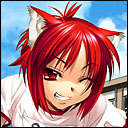In the spirit of Foetz's more well-researched reviews of notable SGI graphics packages, here's a brief overview of Nichimen's N-World suite, a game-centric 3D toolkit that was popular in the late '90s. Screenshots have been taken from the software and from the accompanying
HTML documentation pages
(check 'em out!). Splash screen:
From a 1998 press release by Nichimen: "Nichimen Graphics is a leading supplier of 3D graphics software for game development and interactive entertainment. Nichimen Graphics focuses its efforts on supporting the interactive content market, providing developers with the industry's most open system and leading-edge modeling and animation technology... The company's suite of packages is truly integrated, dramatically simplifying game content generation..."
N-World was widely used in the development of console games in the late '90s, notably for Super Mario 64 and Final Fantasy VII. The software itself was written using a Lisp-based development environment called Allegro CL : "Nichimen chose Allegro CL from Franz Inc. to develop its powerful N-World products... Bob Coyne, Director of Software Development at Nichimen, explains why Allegro CL's Common Lisp/CLOS was the best choice for this kind of product. 'We benefit from the usual advantages of Lisp. Programming in Allegro CL allows concepts and designs to be fluidly expressed in code, and the language and environment don't get in the way...'" N-World's origins in Lisp make sense as it was derived from S-Graphics , the 3D animation system from Symbolics workstations, acquired by Nichimen after Symbolics went under.
N-World, like many 3D packages in the '90s, was organized as a suite of programs, each tailored to a particular part of the graphics production process:
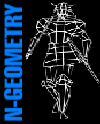
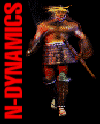
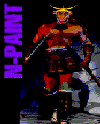
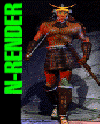
From a 1996 E3 press release : N-Geometry was a 3D polygon-based modeler, N-Dynamics offered animation scripting and choreography, N-Render performed photorealistic rendering (including raytracing), and N-Paint was a 2D/3D paint system. N-World also included game-specific tools like color reduction, a visual PSX VRAM editor , and export to Nintendo 64, Sony Playstation, and Sega Saturn. When Alias|Wavefront's Maya debuted in 1998, Nichimen's Game Engine 2.0 code was bundled with it as part of a collaboration between the two companies.
N-World would later evolve into a package called Mirai that included nonlinear animation, advanced inverse kinematics, and biomechanical motion editing tools, presumably to process motion captured animation, which was increasingly used in game development. While it never achieved the widespread industry adoption of packages like PowerAnimator, Maya, and 3dsmax, N-World and its successors were a significant tool for game developers in the late '90s / early 2000s and offered some very useful and unique features, particularly in the realm of polygonal modeling.
Screenshots:
From a 1998 press release by Nichimen: "Nichimen Graphics is a leading supplier of 3D graphics software for game development and interactive entertainment. Nichimen Graphics focuses its efforts on supporting the interactive content market, providing developers with the industry's most open system and leading-edge modeling and animation technology... The company's suite of packages is truly integrated, dramatically simplifying game content generation..."
N-World was widely used in the development of console games in the late '90s, notably for Super Mario 64 and Final Fantasy VII. The software itself was written using a Lisp-based development environment called Allegro CL : "Nichimen chose Allegro CL from Franz Inc. to develop its powerful N-World products... Bob Coyne, Director of Software Development at Nichimen, explains why Allegro CL's Common Lisp/CLOS was the best choice for this kind of product. 'We benefit from the usual advantages of Lisp. Programming in Allegro CL allows concepts and designs to be fluidly expressed in code, and the language and environment don't get in the way...'" N-World's origins in Lisp make sense as it was derived from S-Graphics , the 3D animation system from Symbolics workstations, acquired by Nichimen after Symbolics went under.
N-World, like many 3D packages in the '90s, was organized as a suite of programs, each tailored to a particular part of the graphics production process:




From a 1996 E3 press release : N-Geometry was a 3D polygon-based modeler, N-Dynamics offered animation scripting and choreography, N-Render performed photorealistic rendering (including raytracing), and N-Paint was a 2D/3D paint system. N-World also included game-specific tools like color reduction, a visual PSX VRAM editor , and export to Nintendo 64, Sony Playstation, and Sega Saturn. When Alias|Wavefront's Maya debuted in 1998, Nichimen's Game Engine 2.0 code was bundled with it as part of a collaboration between the two companies.
N-World would later evolve into a package called Mirai that included nonlinear animation, advanced inverse kinematics, and biomechanical motion editing tools, presumably to process motion captured animation, which was increasingly used in game development. While it never achieved the widespread industry adoption of packages like PowerAnimator, Maya, and 3dsmax, N-World and its successors were a significant tool for game developers in the late '90s / early 2000s and offered some very useful and unique features, particularly in the realm of polygonal modeling.
Screenshots:












